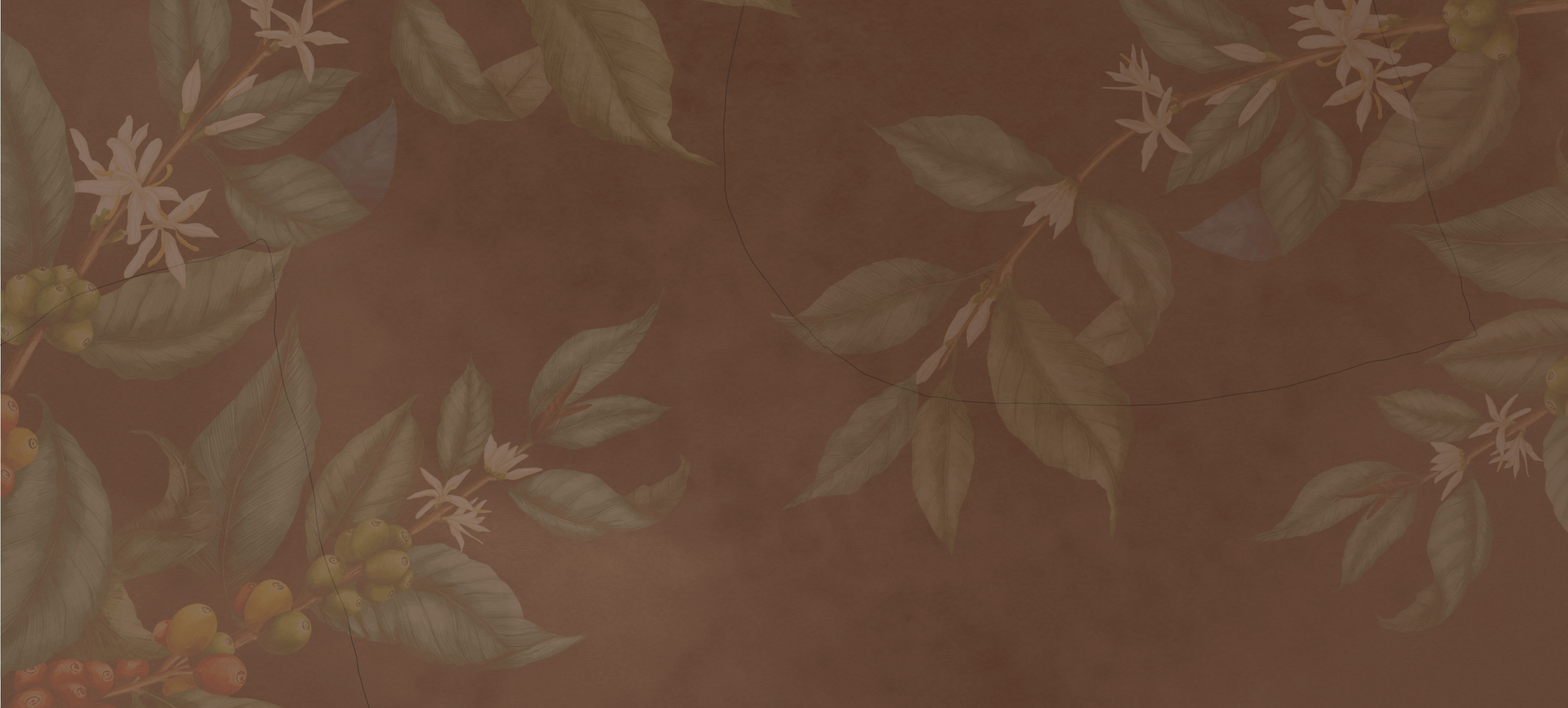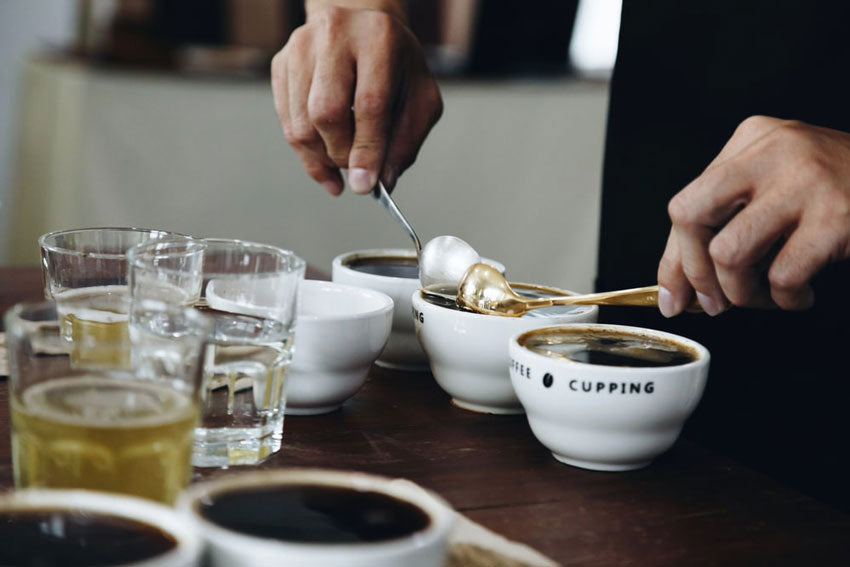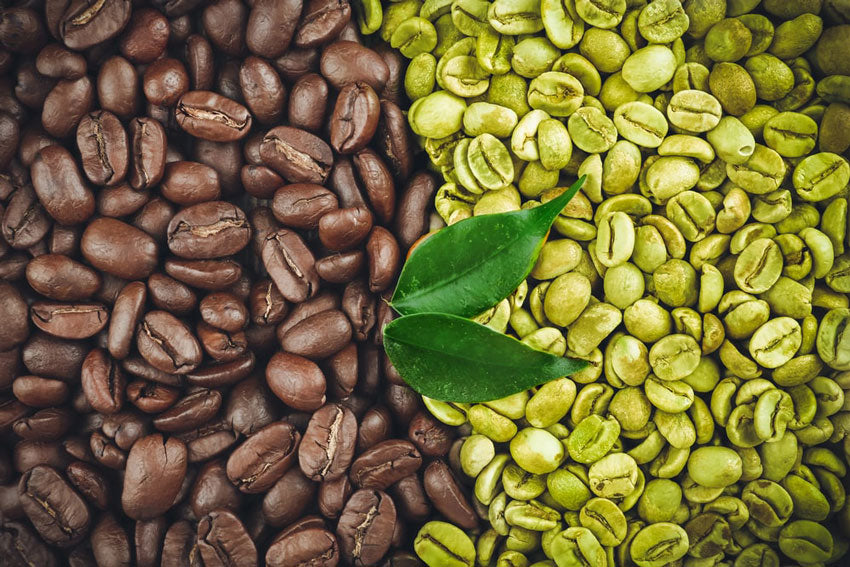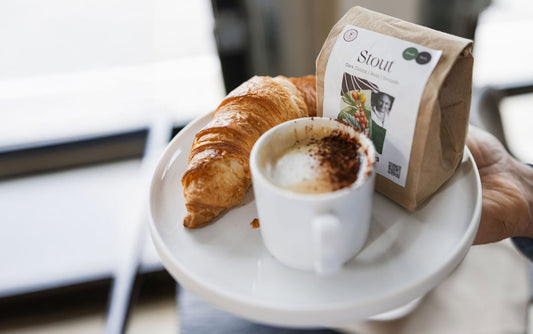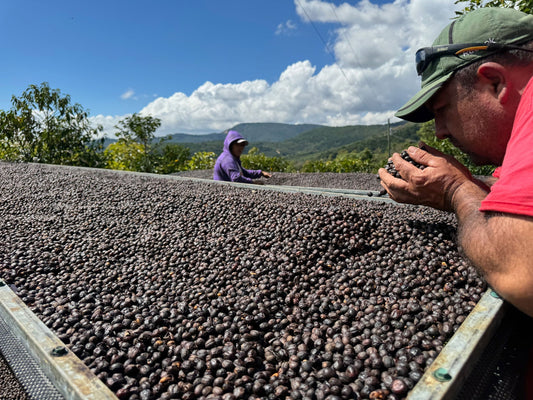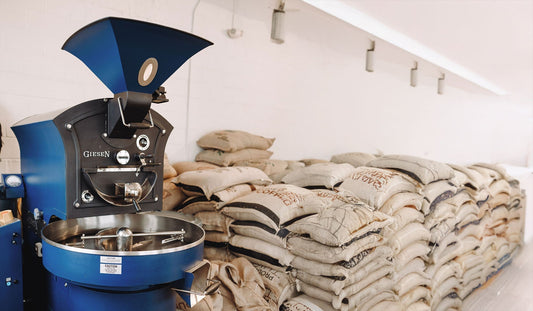In the specialty coffee industry, we love our buzzwords, traceability, origin, direct trade but when you strip it all down, what actually makes coffee “specialty” isn’t a story, it’s a score.
And behind that score is a standard, and behind that standard is a strict system most people never see.

Let’s talk about what makes coffee really qualify as a specialty not in theory, not in someone’s opinion, but according to the rules of the industry.
Because yes, there are rules.
And if you care about the coffee you’re drinking and you should, then this matters.
TL;DRSpecialty coffee standards define coffee as specialty when it scores 80 or above on a 100-point scale, graded by a certified Q Grader using SCA protocols. |
What the Term “Specialty Coffee” Actually Means
To be blunt, specialty coffee isn't about where it’s from, how it’s roasted, or who sells it.
It’s about how it tastes and how clean, balanced, and consistent that cup is when measured under very specific conditions.
The official SCA coffee grading protocol outlines the exact steps and scoring system used during cupping.
According to the Specialty Coffee Association, coffee must score 80 points or more out of 100 on their cupping protocol to even be considered a specialty.
That number isn’t random.
It comes from a structured process that evaluates aroma, flavor, acidity, body, balance, and several other categories.
Each element contributes to a final score, which determines whether a coffee is:
-
Very good (80-84.99)
-
Excellent (85-89.99)
-
Outstanding (90+)
A score below 80? That’s not a specialty. Period.
There’s no gray area, no “almost specialty” badge for effort. Either it meets the threshold, or it doesn’t.
The term specialty coffee has a specific meaning in the industry, shaped by both standards and history.
How Green Buyers Protect Quality At The Source
There’s an unsung hero in the specialty coffee chain that often gets ignored: the green coffee buyer.
These are the people who cup hundreds of samples every harvest, maintain calibration with Q Graders, reject entire lots based on subtle defects, and advocate for producers when a coffee shows promise but needs refinement.
Green buyers bridge the gap between farms and roasters.
They interpret scores, request regrades, and negotiate prices based on quality tiers. Their palate and judgment often determine what even gets the chance to become a specialty lot.
A skilled green buyer doesn’t just accept the COA (certificate of analysis).
They verify it.
They blind cup the sample again. They visit the origin, walk the drying beds, and talk to producers about fermentation practices.
They're the quality control gatekeepers before the coffee even gets to the roaster. Without them, the specialty system becomes theoretical.
The Human Element: Subjectivity vs. Structure
Let’s not pretend the system is flawless.
Cupping scores are based on structure, but humans do the scoring. And even Q Graders have biases, preferences, off-days, and palates shaped by regional experiences.
A coffee that scores 87 in Japan might land at 84 in California or 85 in Nairobi. Calibration matters (Q Grader calibration process), and while there are protocols to reduce bias, the human element introduces variance.
This is why experienced roasters cup in-house even when buying “Q certified” lots.
Because while the protocol is universal, the interpretation isn’t. And no one knows your brand’s flavor targets better than you do.
Still, this slight subjectivity doesn’t invalidate the system. It just means we need to treat scores as signals, not absolute truths.
An 84.5 doesn’t make a coffee worse than an 85.0. It just places it in a different buying category. The nuance lies in context.
What Happens To Coffee That Doesn’t Make the Cut?
So what about the 76s, 72s, and below?
They still end up somewhere. Commercial blends. Pre-ground supermarket tins. Instant coffee. In some cases, even in capsules with “gourmet” branding and a premium price tag.
If you’re paying high-end prices but no one can tell you the score, origin, process, or harvest date, you’re likely not drinking specialty coffee, no matter what the package says.
And that’s not inherently bad. Not every cup needs to be a flavor deep-dive into dried fig and honeysuckle. But let’s not call it what it isn’t. That’s a practical specialty vs commercial coffee comparison.
The SCA Cupping Form: More Than Just Tasting Notes
The SCA cupping form isn’t just a way to nerd out over tasting notes. It’s a tool that allows graders to evaluate coffee objectively and reproducibly.

It breaks the evaluation down into ten categories. Each is scored from 6 to 10, usually to the nearest quarter point.
These include fragrance/aroma, flavor, aftertaste, acidity, body, balance, sweetness, uniformity, clean cup, and overall impression.
The process is done blind, no branding, no information about origin, variety, or processing method. It’s just the coffee and the palate. Which, let’s be honest, is exactly how it should be.
But here’s where it gets interesting.
These scores aren’t just for bragging rights.
They directly impact the economics of the coffee.
A coffee scoring 86 can fetch two to four times the price of a 79-point coffee.
And yet, the difference between those scores on paper might come down to just half a point in one category.
The precision is that tight. The consequences are real.
Who Are Q Graders and Why Do They Matter?
The people who evaluate these coffees? They’re called Q Graders and becoming one is a beast of a process.
The Coffee Quality Institute manages the Q Grader program and maintains standards for cupping calibration across the globe.

It involves passing 19 separate tests over a six-day course.
These tests cover everything from sensory triangulation to green bean grading to detecting common defects.
There’s even an olfactory exam that requires identifying different aromas from essential oils without visual cues or context.
Less than half the people who take the test pass on their first try.
Once certified, Q Graders act as the gatekeepers of specialty.
Their job is to ensure that grading is consistent around the world whether it’s happening in Kenya, Colombia, or Germany.
If a coffee scores 87 in Addis Ababa, it should score the same in Seattle.
That consistency is the foundation of trust in the grading system. Without Q Graders, the entire specialty standard would fall apart.
Defects And Clean Cups: The Unsexy Truth
You don’t see it on Instagram reels, but much of coffee grading comes down to identifying defects. And this is where many coffees lose their shot at the specialty label.
The SCA defines two types of defects: primary (major) and secondary (minor).

Just one full black bean or one sour bean in a 350g green sample is enough to disqualify a coffee from being specialty.
These standards follow the green coffee defects classification defined by the SCA, which lists both primary and secondary flaws.
Five broken or chipped beans? That’s counted as one secondary defect. Get more than five of those, and it’s game over.
This may sound harsh, but it’s necessary.
Specialty coffee isn’t about perfection it’s about meeting a high and verifiable bar. A clean cup without physical or flavor defects is the bare minimum.
And unfortunately, many coffees marketed as “premium” wouldn’t survive a proper SCA inspection.
Processing Mistakes That Tank Scores
Let’s say a farmer grows a perfect crop.
Beautiful cherries, hand-picked at peak ripeness. But then someone leaves them to dry on dirty plastic sheets.
Or they’re stored in a damp warehouse. Or fermentation is rushed or poorly managed.
Congratulations. You just turned an 87 into a 78.
The post-harvest process can make or break a coffee. And it’s often where the most damage is done. Fermentation, washing, drying, and storage must be controlled with surgical precision if the coffee is to retain its potential.
And yet, this is one of the least funded stages in many origin countries. Infrastructure, training, and equipment are lacking, which makes achieving specialty status a constant uphill battle for producers.
We celebrate high scores, but we rarely talk about how many near-misses never made it because of poor post-harvest support.
Roast Doesn’t Make It a Specialty
Another myth worth debunking: a fancy roast doesn’t make a coffee specialty.
SCA cupping is done with a light roast, typically roasted specifically for grading, not for drinking. The point is to taste the bean, not the roast.
A great roaster can enhance a high-quality coffee. But they can’t fix a mediocre one. If the green bean is defective or dull, no amount of Maillard reaction will save it.
You’re just polishing a flawed gem.
That’s why grading is always done pre-commercial roast. Specialty starts at the bean level, not the bag.
The Certification Confusion: Organic, Fair Trade ≠ Specialty
Here’s a curveball for consumers: certifications like Organic or Fair Trade do not equal specialty. At all.
A Fair Trade certified coffee might have great ethics and traceability, but if it scores 78, it’s not specialty. On the flip side, a single-origin micro-lot from Ethiopia might have no certifications at all but score a clean 89.
Certifications are about processes.
Specialty is about cup quality. Ideally, you want both. But they measure different things. And conflating the two misleads customers and undermines what the specialty standard is supposed to mean.
How Scores Impact Farmer Pay (And Why It’s Not Always Fair)
On paper, the higher the specialty coffee score, the higher the price paid to the producer.
That’s the idea, right? Incentivize quality, reward precision, and let the market signal what’s valuable.
But in practice, it’s more complicated.
A producer might spend years improving picking methods, upgrading fermentation tanks, and learning to use refractometers only to lose an entire harvest to weather.
Or get undercut by a buyer who says “84 is enough” and won’t pay more for the 86.
And then there’s the calibration gap between buyers and exporters.
A coffee scored 85 at origin might get an 82 at destination due to shipping damage or moisture change. What's the difference? It could mean losing access to the specialty market altogether.
In other words, the reward system isn’t always predictable or equitable. That’s not a flaw in the scoring itself, it’s a flaw in how we’ve built our supply chains around it.
Specialty coffee has the potential to uplift farmers. But only if we treat scores as the start of a conversation, not the whole story.
The Trouble With Relying On A Single Score
Another overlooked issue is how we anchor everything around a single number.
A coffee’s quality can fluctuate even within the same harvest. Different pickings, lots, and drying conditions can shift scores up or down by 1-2 points. A coffee graded 86 in January might be an 84 by May.
But consumers rarely see these changes. The score is fixed on the product page like it’s an eternal truth.
Some roasters update scores regularly. Others don’t. Some even rely on the exporter’s or importer’s original COA, which may have been taken from the best lot of a harvest, not the actual one delivered.
That’s not fraud. But it’s not full transparency either.
If we’re going to use scores to justify pricing or differentiate products, we owe it to customers to be specific, accurate, and timely.
How Roasters Play Into the Score System
Roasters play a critical role in whether a specialty coffee lives up to its score or not.
A green bean might start with all the right credentials: 87 points, no primary defects, high-altitude, microlot. But if the roast is uneven, too dark, or not properly rested before sale, all that potential gets buried.
Here’s where things get tricky. Specialty green beans are expensive. Roasting them wrong doesn’t just waste the product, it wastes the entire effort of everyone before you in the supply chain.
So why does it happen?
Some roasters don’t cup their own roasts. Some roast everything the same, whether it’s a washed Ethiopian or a natural Brazilian. Some roast for what they think their customers want, even if it doesn’t suit the bean.
This isn’t always laziness. Sometimes it’s fear. A light roast that shows off delicate floral notes might be exciting to professionals, but it might confuse someone expecting a chocolatey espresso.
So roasters compromise. They mute the character to chase “approachability.” But in doing so, they erase the very thing that made the coffee special. That’s where coffee quality control in roasting actually matters.
If you're a roaster buying specialty-grade coffee, your job isn’t to play it safe. It’s to do justice to the bean
If you're a roaster buying specialty-grade coffee, your job isn’t to play it safe. It’s to do justice to the bean.
Can Low-Scoring Coffee Be Enjoyable?
Absolutely.
Not every great cup needs to be a specialty. Not every coffee needs to challenge your palate or tell a single-origin story.
Sometimes, you want a consistent, chocolate-heavy, easy-to-brew coffee that just works with milk. And there’s no shame in that.
The key is honesty.
If we sell a 78-point coffee as a comforting, reliable daily driver, we’re setting the right expectations. If we call that same coffee “award-winning specialty,” we’re lying.
It all comes down to matching the product with the promise. A lower score doesn’t mean the coffee is bad. It just means it's not a specialty, and that’s okay, if we’re clear about it.
Why It All Matters
When we misuse or water down the term “specialty,” it doesn’t just confuse consumers.
It devalues the work of producers, Q Graders, importers, and roasters who are trying to uphold a meaningful standard.
We owe it to ourselves and the industry to be precise.
That means asking questions.
- What’s the actual cupping score?
- Was it graded by a certified Q Grader?
- Are the defects disclosed?
- Is the coffee traceable to a specific farm or cooperative?
Because when we stop asking, we open the door to greenwashing, misinformation, and ultimately, mediocrity.
From The Roaster’s Perspective
We buy on data, then verify with our own palate. Every lot we consider comes with a COA, a Q Grader score, and a defect report.
We still blind cup it next to control coffees, roasted on a standardized SCA cupping profile to isolate the bean, not the roast curve.
Once a lot is in-house, we re-cup at multiple rest points and track moisture and water activity through storage, following coffee moisture and water activity standards.
If a coffee lands at 86 on arrival but drifts after shipping or months in the warehouse, we say so. Scores are signals, not trophies.
Roast development is where most specialty potential is lost. We set profiles to express origin characters first, not to force a house flavor.
A natural Brazil and a washed Ethiopia should not taste the same. When a coffee is delicate, we protect it. When it’s dense, we give it the energy it needs without baking or tipping.
We also publish what matters: score range, harvest date, process, elevation, variety, and who graded it, aligned with the SCA coffee grading system.
If you’re paying for a specialty, you deserve more than adjectives. You deserve the numbers and the story that produced them, including how to read a coffee COA and our green coffee storage best practices.
FAQ: Specialty Coffee Standards
What Score Qualifies As Specialty Coffee?
80 points or higher on the SCA cupping form, typically graded by certified Q Graders under standard cupping conditions.
Who Decides The Score?
Certified Q Graders following SCA protocols. Importers and roasters often verify with their own blind cuppings to stay calibrated.
Do Certifications Like Organic Or Fair Trade Make A Coffee Specialty?
No. Certifications cover farming or trade practices. “Specialty” refers to cup quality. You can have certified non-specialty and non-certified specialty.
Does The Roast Level Affect Whether A Coffee Is Specialty?
The grade applies to green coffee. Roast can reveal or mute quality, but it doesn’t convert a non-specialty bean into specialty.
Why Do Scores Sometimes Change Over Time?
Lot variation, shipping, storage, and age can shift sensory quality by 1–2 points. Responsible roasters track and update info.
Final Thoughts
Specialty coffee is hard-earned. Not because it’s trendy or because a barista used a Chemex.
But because it meets a strict set of global standards for quality, cleanliness, and sensory excellence.
It’s easy to slap “specialty” on a label. It’s much harder to meet the requirements consistently, lot after lot, season after season.
As roasters, we’ve seen what goes into producing a true 86-point coffee.
It takes skill, patience, resources, and a bit of luck with the weather.
But it also takes honesty, something that’s sometimes in short supply in our corner of the industry.
If we want to preserve the integrity of specialty coffee, we have to start by respecting the system that defines it. And that means treating “specialty” as a grade, not a gimmick.
